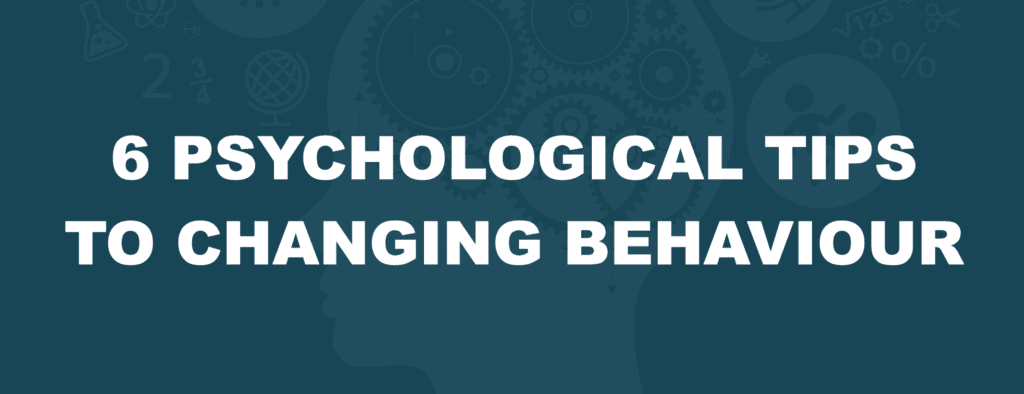
1. Change the context
Behaviour is often triggered by contextual factors; we automatically put on our seat belt as we sit in the car or decide we want a cup of coffee as we walk past Starbucks. These contextual factors trigger associations in our brains that can make certain actions salient or prompt automated responses. Because our behaviour can become heavily ingrained with context, often one of the most powerful steps to changing behaviour is altering the environment. This can create new context-action associations or break existing ones; allowing for new behavioural responses to form.
2. Leverage social proof
As social beings, we are hardwired to reference the behaviour of others when assessing what is safe and socially desirable. This tendency certainly has its advantages; it allows for social cohesion and seeing others act in a certain way without any adverse reaction is often a quick-fire way of establishing it’s probably safe to follow suit. However, organisations can also leverage this innate driver by presenting a behaviour as socially prevalent or desirable. This approach can be particularly powerful if the person already engaging in the behaviour (or promoting it) is known by, respected by, or similar to, the target audience.
3. Make it easy
The human tendency to take the path of least resistance provides a simple, yet effective way to change behaviour; make desired behaviour as easy as possible by removing frictions points, and make undesired behaviour hard by adding them. Many retailers employ this tactic by placing products along checkout queues and next to the tills to increase the saliency and ease with which consumers can grab them en route to paying. As an example on the other end of the spectrum; IKEA don’t want customers nipping in and out of their stores so they make it near impossible for them to do so. Instead, the maze-like layout requires people to trudge through endless rows of goods; increasing the likelihood they’ll pick something up along the way.
4. Consider the cost-reward tradeoff
A lot of human behaviour is underpinned by the cost-reward tradeoff; we seek to maximise reward whilst minimising ‘cost’ – a process that often happens outside our conscious awareness. In this context, ‘cost’ doesn’t just relate to financial expenditure; it also refers to cognitive and physical resources. ‘Reward’ is the release of feel-good chemicals in our brain which often occurs when we fulfil physical needs and/or psychological desires. Considering how this balance can be tipped in a way that minimises the cost required to enact the desired behaviour and dials up the reward for doing so can be a powerful route to influencing behaviour.
5. Elevate customers’ mood
Research has shown that a positive mood can increase product appeal and consumer spending. This is because people unconsciously misattribute their positive mood to how they feel about products or information they encounter at the time. Organisations can leverage this beneficial impact by finding ways to elevate customers’ mood. Excellent customer service is an effective way of doing this, but other, less obvious techniques, can also be used. For example, the use of bright halogen lighting within stores replicates the effect of sunlight which can have a positive effect on mood.
6. Be relevant
People’s mindsets can heavily influence the way they process and respond to information. Of course, this will vary between situations and individuals but having a better understanding of a target audience’s general mindset allows organisations to resonate with them more effectively. Companies, such as McDonald’s, have harnessed this by creating road-side digital billboards that deliver different messages depending on traffic speed. When traffic was slow the digital billboards said: “Stuck in a jam? There’s a light at the end of the tunnel”. Considering and tapping into an audience’s mindset, allows companies to deliver more relevant, and therefore more impactful, messaging.
At Shift, we have been exploring the psychological factors that underpin human behaviour for over 15 years. We harness this knowledge to help organisations better understand their consumers and identify the most
effective routes to changing behaviour. Want to find out more? Please get in touch, we’d be delighted to chat.